Shop with your doctor: 13 ways to make your shopping basket healthier
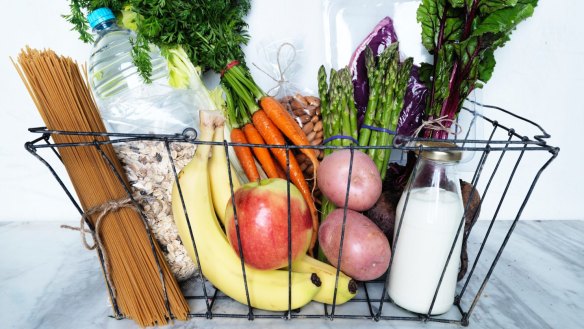
Is there anything we can take to help fend off Australia's leading causes of death – heart disease, stroke and dementia? Yes: it's called food.
A healthier diet (more vegetables, fruit, nuts and some low-fat dairy, for instance) can reduce high blood pressure as effectively as a drug – and keeping blood pressure down helps lower the risk of all three diseases. As for cancer, 7000 new cases each year in this country are linked to not eating enough fruit, vegetables and fibre and eating too much red meat, according to Cancer Council Australia. Giving highly processed food the flick is smart, too, with mounting evidence that it's best left on the shelf – a French study of 45,000 people earlier this year linked high intakes to an increased risk of heart disease and stroke.
This is why Bondi GP Dr Daria Fielder does her best to guide patients towards better eating habits. A lot of conversations in her surgery turn to food, sometimes about carbs, the nutrition topic that most confuses her patients, she says, and often about weight loss.
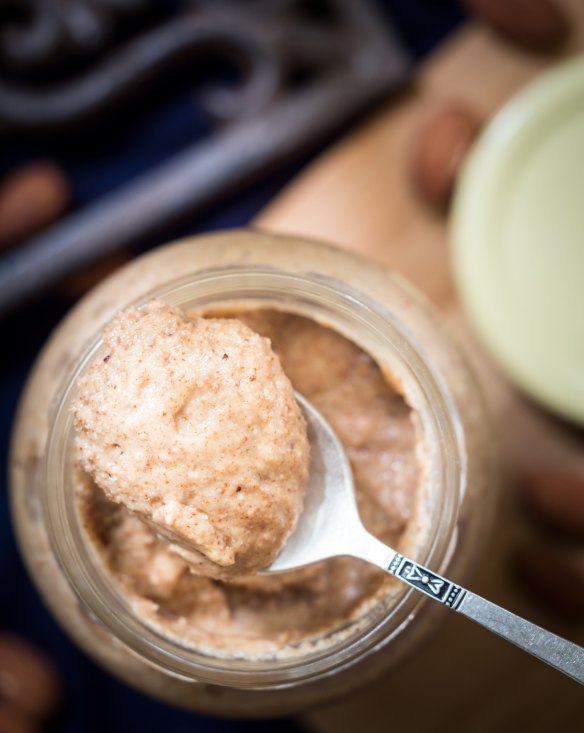
"I can give general advice but with weight loss I also refer them to a dietitian who can create a plan to suit them – then I follow up to check for improvements in cholesterol and blood pressure levels. Seeing the numbers coming down helps keep them motivated to eat better."
So which foods would she like her patients to put in the shopping trolley? Good Food joined her in the supermarket to find out.
Rev up the vegies
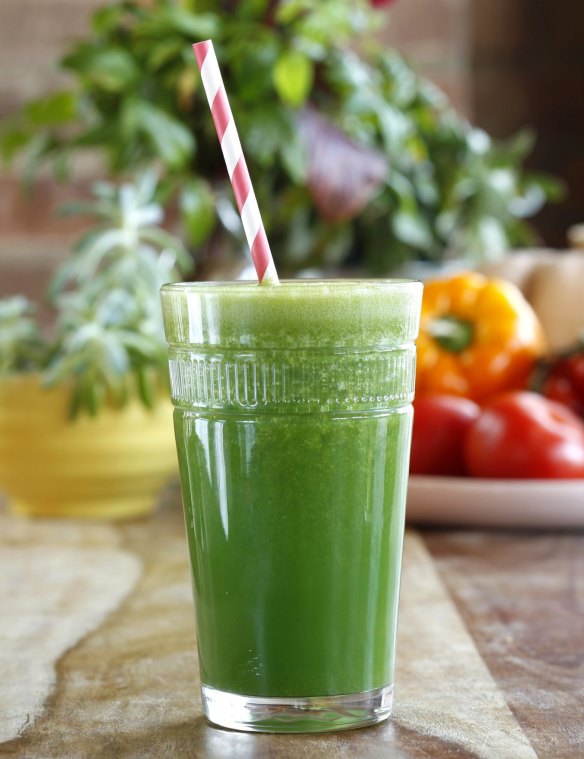
We start in the fruit and vegie section, where most meal ingredients for her own family of five come from – putting her among the measly 7 per cent of us who manage to eat enough vegies.
"It's easy to add more vegetables to meals – just steam them for a few minutes and add some olive oil and lemon juice, or stir-fry them. Or use them raw in a salad – even this doesn't need cooking," she says, brandishing a beetroot. "You just grate it and add dressing."
Smash an avo
Around six avocados go into Daria Fielder's trolley each week – a better spread for bread and toast than butter or margarine because they're rich in healthy fat (the same monounsaturated fat as olive oil) and other nutrients, she says, and they work for breakfast, lunch or dinner. They can also help keep cholesterol levels healthy.
Add orange-aid
She likes to include rich sources of vitamin C such as citrus and kiwifruit. "People think they should take vitamin C when they have a cold – but what counts is consuming vitamin C consistently."
More oranges may help protect vision too – a study from the Westmead Institute of Medical Research has linked eating oranges regularly to a lower risk of age-related macular degeneration, Australia's leading cause of severe vision loss. Fruit also trumps biscuits for snacking, she says, pointing to packs of Anzac biscuits with 34 grams of sugar per 100 grams. Bananas, with just 12 grams of sugar per 100 grams, also deliver nutrients like heart-healthy magnesium.
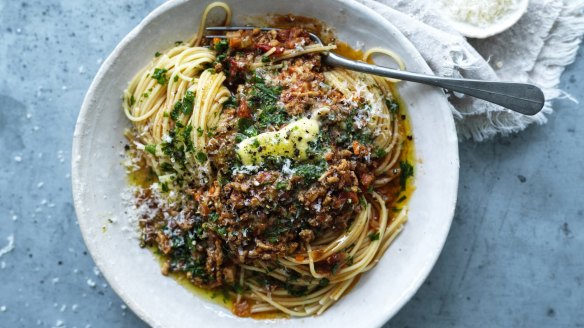
Buy lean meat (less is more)
In the chiller packed with ready-prepared meals, Dr Fielder bypasses a $6 single serve of spag bol and heads to the fresh meat section, where $8 buys 500 grams of premium mince.
"Half a kilo of lean mince gives you three or four serves of spaghetti bolognese if you add vegetables to the sauce, so it's cheaper to make it yourself. Look for the leanest cuts of meat – they cost more but you only need small amounts: you don't need a 300 gram piece of meat on your plate. "
Spaghetti bolognese is also a good "carrier" for extra veg, she adds.
"When I go to cardiology conferences, there's a lot of discussion about reducing meat and eating more fish and plants but many people don't know how to create meals with more vegetables – adding them to pasta sauces is an easy way," she says.
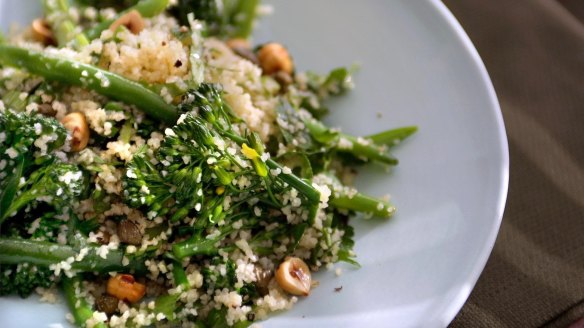
Pick the right carbs
"Some patients are unsure how to identify healthy carbs – or even if they should eat grains at all," she says. "There's nothing wrong with pasta – but it's best to keep to smaller servings."
She recommends eating a range of different wholegrains such as buckwheat, quinoa and burghul (cracked wheat). They're all ways to get more fibre. According to a recent World Health Organisation report, people who ate the most fibre (25 grams to 29 grams daily) had a 15 to 30 per cent decrease in mortality compared with those eating the least.
If there's no time to cook, burghul is a star – just a quick soak and it's the basis for tabbouleh. Other good bets for fibre? Wholemeal cous cous, barley and freekeh.
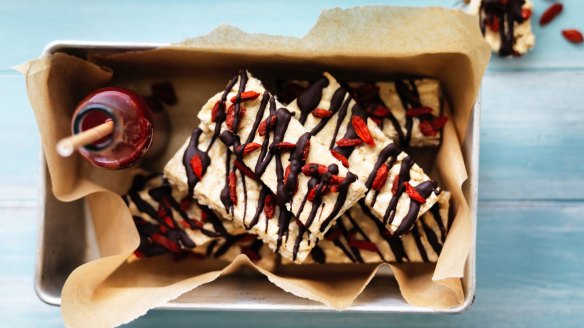
Lose the lunchbox bars
Lunchbox bars and snacks are on special – but Daria Fielder's not impressed. Why give kids a product like an LCM bar (the Split Stix Yoghurty bar contains puffed rice, yoghurt-flavoured compound, sugar, vegetable oil, milk solids, yoghurt powder, emulsifier, food acid, fructose powder and hydrogenated soya bean oil) when you could pack a kiwifruit and a slice of cheese that between them deliver useful nutrients?
"Processed sugary snack foods just train kids' taste buds to want more sugary processed food," she points out. "The best thing to put in a school lunchbox is a sandwich or wrap with wholegrain bread with some fruit and vegetables – cherry tomatoes, baby carrots and baby cucumbers are easy to pack and eat. "
Choose wholegrain bread
With bread, it's a myth that white is all kids will eat – give them wholegrain bread right from the start and that's what they'll eat, she says. Wholegrains help lower cholesterol and are linked to a lower risk of heart disease – but check the nutrient panel on the pack to find a brand that's higher in fibre (3g or more per serve) and lower in salt (less than 400mg per 100g), she suggest.
Dr Fielder, who grew up in Russia, is a fan of dark rye bread – it's a good source of resistant starch, a fibre that's important for gut health and which may reduce the risk of colon cancer.
Swap Nutella for nut butter
But don't spread wholegrain toast with Nutella. With a sugar content of more than 50 per cent, it gets the thumbs down. Nut butters based on almonds or a blend of almond, cashew and brazil nuts are far better – a daily nut habit is linked to less heart disease, she says.
"Look for nut butters made with nuts alone and no additives. If you compare a sweet spread like Nutella with a plain almond butter, there's no contest – the almond butter has more than three times the protein of Nutella – while Nutella has around 10 times as much sugar."
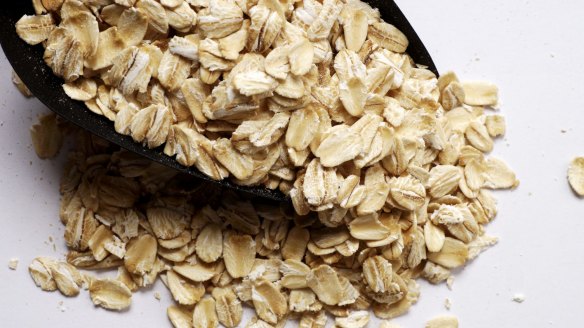
Get your oats
There's more heart-friendly food in the breakfast aisle – rolled oats contain beta-glucan, a fibre that helps keep cholesterol levels healthy, Fielder says.
"'One of the most common questions I get is 'What should I feed the kids for breakfast?' and you can't go wrong with plain rolled oats – especially as so many breakfast cereals are high in added sugar. You can soak them overnight with berries and they're ready to eat in the morning, or cook them with water or milk and add fruit. But use traditional oats not instant oats – traditional oats are more slowly digested and keep you feeling full for longer."
Tread carefully in the breakfast aisle
Navigating the breakfast aisle can be tricky. It's where front-of-pack claims can cast a healthy glow over products loaded with sugar – like Nesquik cereal, which spruiks its credentials as a source of wholegrains, iron, calcium and zinc "to promote kids' normal growth and development", yet is almost 30 per cent sugar.
"You need to flip the pack and read the nutrition information panel and ingredient list – and not rely on marketing claims on the front," says Fielder. "Look for products with the most fibre and least sugar.
"There's also no rule that says breakfast must come from a cereal box. An egg takes three minutes, or there's wholegrain bread with avocado or nut butter. Or you can make a quick smoothie. It takes seconds to buzz some spinach, a little fruit and nuts or seeds with water or milk – and it's better than commercial protein shakes or packaged breakfast drinks. "
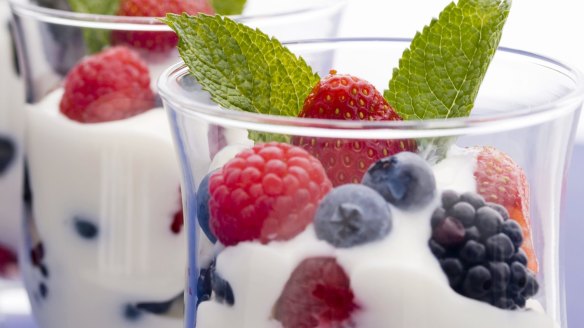
Opt for unflavoured yoghurt and kefir
In the dairy section, she opts for natural yoghurt and unflavoured kefir because they're lower in sugar.
"You can add berries or other fruit to natural yoghurt if you want extra flavour – kids will eat unflavoured yoghurt if that's what they're used to," she says.
(If you prefer flavoured yoghurt, buy brands with less sugar – five grams to 15 grams of sugar per 100g grams is OK, according to the Live Lighter campaign, an initiative of Cancer Councils Western Australia and Victoria, but try to avoid anything with more than 15 grams per 100 grams.)
Kefir might be a novelty to many of us, but to Fielder, raised in Russia, this fermented milk is just a normal part of the diet – and a good way to help maintain a healthy gut. "It's a better choice than most commercial probiotics," she says.
Love legumes (they love you back)
Lentils and other legumes are more gut-friendly foods for the shopping list – they help good bacteria thrive in the gut. All lentils are good but red ones cook the fastest (15 to 20 minutes). Fielder adds them to soups and tosses drained canned black beans into salads.
"They're a great source of plant protein and an easy way to cut down on meat."
Buy nuts, not chips
Nuts also deliver plant protein (add them to stir-fries, salads and grain dishes), along with more fibre, and an amino acid called arginine – our bodies convert this to nitric oxide, which helps keep blood vessels healthy.
"Raw unsalted nuts are a far better snack option than biscuits, muffins or chips," adds Fielder. "It's good to keep some with you – a lot of healthy eating is about planning ahead and being prepared."
It's also about loading the shopping trolley with the right food – after all, its contents are a snapshot of your diet.
"Often when patients change the way they eat, they'll say to me 'I didn't want to do this at first – but now I feel so much better'."
Eat yourself better
GPs should do more to help us eat better rather than just prescribe a pill, says associate professor Michael Skilton, a researcher specialising in nutrition and obesity at the University of Sydney.
"With so many health problems flowing from obesity, we could do a lot to prevent heart disease, diabetes, cancer and arthritis if we got people eating healthier food – and doctors need to play a part," he says.
The idea of food as medicine is gathering steam in the United States, where at least 10 medical schools now offer courses in culinary medicine. In New York, the city health authority is helping patients with diabetes, high cholesterol and high blood pressure to switch to a whole food, plant-based diet to improve their condition, while a University of California program delivers three healthy meals a day to people with chronic disease to see if a better diet leads to fewer hospital readmissions.
In Australia there are moves to help GPs learn more about nutrition and its impact on health. Food as Medicine is one – a free open online course from Monash University. The next one runs from November 4-24.
"It's for anyone with an interest in nutrition but especially health professionals – lack of confidence is one barrier to doctors helping patients eat better," says Dr Simone Gibson, senior lecturer with the Department of Nutrition, Dietetics & Food, who helped develop the course. "Medical courses typically provide little nutrition education and this helps bridge the gap."
With so much poor health now related to how we eat, doctors need to help nudge their patients towards healthier food habits – just as they'd encourage smokers to quit, adds Dr Alyce Wilson, a public health doctor who has studied both nutrition and medicine.
"I work with mothers and babies and rely a lot on my knowledge of nutrition because healthy eating plays a big role in pre-conception and pregnancy health. Patients listen to doctors and want to ask them about nutrition – we need to make sure doctors, especially GPs, have the nutrition knowledge and skills to provide this advice – and minimise people seeking nutrition information from non-experts."
The best recipes from Australia's leading chefs straight to your inbox.
Sign up